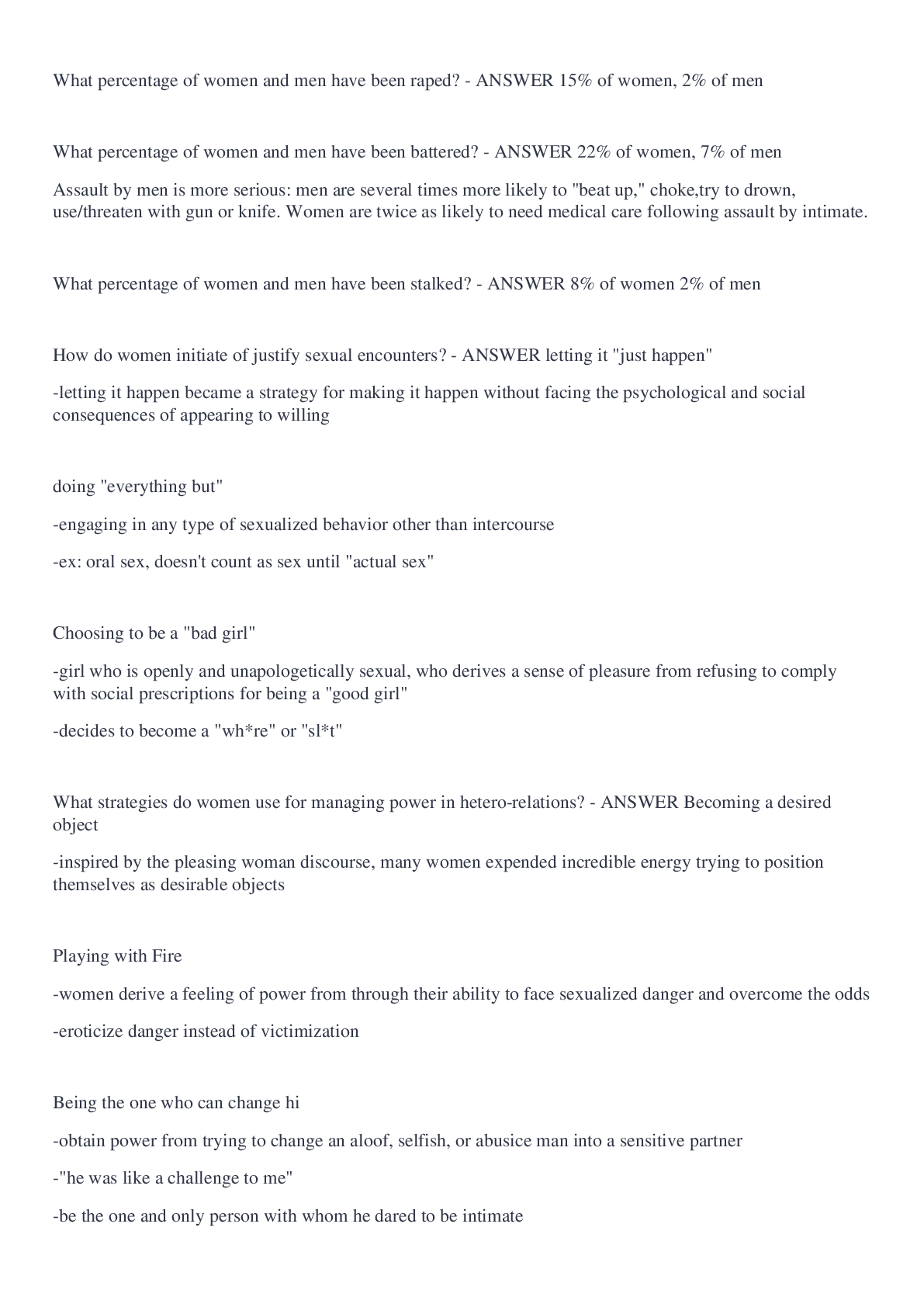Kaplan Exit Exam 2022/2023 with Complete Solution
Document Content and Description Below
Somatization disorder - ANSWER Marked by several, often vague, physical symptoms that suggest a physical disorder but have no physical basis Somatization disorder - Pathophysiology - ANSWER - Physi... cal problems involve all body systems - Often become frustrated w/ the primary HCP - Shop around until they find one who will give then a new medication or treatment - Typically undergo multiple surgeries Somatization disorder - Tx - ANSWER - CBT is the best treatment - Reduce the tendency to visit numerous medical specialists "doctor shopping" - Assign "gatekeeper" physician - Reduce supportive consequences of talk about physical symptoms - Antidepressants Somatization disorder - Nursing Interventions - ANSWER - Encourage positive somatic activities such as massage, exercise - Encourage expression of feelings - Identify stressors and problem-solving strategies - Explore possible secondary gains and do not reinforce them Conversion disorder - ANSWER A rare somatoform disorder in which a person experiences very specific genuine physical symptoms for which no physiological basis can be found. Conversion disorder - S/Sx - ANSWER - Pseudoseizures - Loss of a special sense (vision, hearing, or touch) - Aphonia - Dysphagia - Impaired balance or coordterm-12ination - Urinary retention - Lack of concern about the problem (la belle indifference) Conversion disorder - Tx - ANSWER - Medication: benzodiazepines - Psychotherapy, relaxation training, behavior modification, biofeedback Conversion disorder - Nursing Intervention - ANSWER - Assist w/ diagnostic evaluation - Discuss feelings w/ client rather than symptoms - Promote a therapeutic relationship - Recognize and avoid supporting secondary gains of client Rheumatic fever - ANSWER - Inflammatory disease - Occurs after group A beta-hemolytic streptococcal infection (often pharyngitis) - Indications: carditis, polyarthritis, erythema marginatum, subcutaneous nodules, chorea - Tx: penicillin - Nursing considerations: instruct family about antibiotics, provide emotional support Osteomyelitis - S/Sx - ANSWER - Severe pain, fever, irritability, and tenderness - Child may not want to move extremity - May hold extremity in a position of semi-flexion - Complications: Sepsis, amputation, pathological fractures Osteomyelitis - Tx - ANSWER - Bed rest - Aggressive IV antibiotic therapy for 4-6 wks or longer - Antibiotics given directly into wound bed via irrigation - Surgical debridement - Support affect extremity w/ pillows - Splints to maintain proper body alignment - Encourage fluid intake - Monitor I&O - High-protein diet w/ sufficient carbs, vitamins, and minerals Osteomyelitis - Nursing Diagnosis - ANSWER - Acute pain from injury - Impaired physical mobility Postpartum Blues - ANSWER - 1st or 2nd day postpartum - S/sx: let-down feeling, anxiety, sadness, anger, insomnia, HA, fatigue, restlessness - May continue to postpartum depression - Nursing care: assess for "blues", make referral for follow-up Postpartum Depression - ANSWER - Precipitated by decrease in estrogen and progesterone - May follow "blues" - S/Sx: tearfulness, anorexia, difficulty sleeping - Lasts longer than 2-3 wks - Nursing care: encourage verbalization of feelings and identify concerns, refer to psychiatric consultation, assess potential for suicide, offer support group - Nursing diagnosis: potential for suicide, potential for low self-esteem Postpartum Hemorrhage - Causes - ANSWER - Uterine atony - Prolonged or precipitate labor - Retained placenta - Overstimulation of uterus - Uterine rupture, inversion, trauma - Blood coagulopathies - Laceration of lower genital tract Postpartum Hemorrhage - S/Sx - ANSWER - Bleeding that soaks peripad within 1 hr or less - Boggy uterus - Other symptoms of shock may not indicate major blood loss soon enough Meniere's disease - ANSWER Disorder of inner ear - Cause by dilation of the endolymphatic system Meniere's disease - Pathophysiology - ANSWER - Excess lymph fluid in inner ear - Obstructs inner ear - Swelling within labyrinth - Distorts sound and balance signals Meniere's disease - S/Sx - ANSWER - Tinnitus - Unilateral hearing loss - Vertigo - Headache - N/V - Diaphoresis Meniere's disease - Diagnostic - ANSWER - + Romberg test - + Caloric stimulation test - Audiometry - Vestibular tests - Neurological exam - Glycerol test Meniere's disease - Tx - ANSWER - Salt & fluid restriction to decrease endolymphatic fluid - Medications: antihistamines, anticholinergics, benzodiazepines, antivertigo medication, diuretics - Bed rest, slow position changes - Surgery to control vertigo w/o damage to hearing, transection of vestibular nerve Meniere's disease - Nursing Diagnosis - ANSWER - Disturbed sensory perception due to dizziness, tinnitus, & imbalance - Anxiety about risk of falling & unpredictable patterns of vertigo - Potential for injury Heat therapy - ANSWER - Promotes vasodilation, decreases blood viscosity, increases metabolism of tissues, increases capillary permeability - Should not be applied for longer than 20-30 minutes, or reflex vasoconstriction and tissue congestion can occur Cold therapy - ANSWER - Promotes vasoconstriction, increases blood viscosity, decreases metabolism of tissues, has local anesthetic effect, decreases edema/pain/inflammation - Decreases muscle tension - Should not be applied for longer than 20 minutes or reflex vasodilation can occur Postpartum Hemorrhage - Tx - ANSWER - Massage uterus - Oxytocin, ergonovine, methylergonovine, prostaglandin F2 analogs - Blood transfusion - Relieve bladder distension by voiding or catheterization - Fluid replacement - Manual removal of placenta pieces - Dilation and curettage - Hysterectomy Postpartum Infection - ANSWER - S/sx: Temperature 100.4 F or higher on any two consecutive postpartum days exclusive of the first 24 hrs; chills; tachycardia - NC: Encourage early ambulation, change peripads frequently, monitor for s/sx of infection, administer antibiotics Pruritus - ANSWER - Severe intense itching, tingling, burning sensations - Causes: rubbing/scratching that might excoriate the skin, allergies, hyperbilirubinemia, emotional issues - Tx: removal of causative agent, corticosteroid, antihistamines - NC: soothing tepid baths, short nails, mittens for people who can't control the urge to scratch Psoriasis - ANSWER - Chronic, noninfectious inflammatory disease of the skin - S/Sx: chronic recurrent thick/itchy, erythematous papules/plaques covered w/ silvery-white scales w/ symmetrical distribution - NC: antimetabolites, topical steroids, soak in bath w/ oil or coal tar, soft brush, UV light Impaired integument - ANSWER - Any break or injury to the skin - Causes: wound, prolonged pressure, irritation, immobility, pressure injury, physical/medical conditions - Complications: cellulitis, secondary infections, necrosis Newborn care at birth - ANSWER - Airway: suction mouth first then nose - Clamp umbilical cord - Maintain warmth, prevent temp. drop - Place ID bands on infant and mother - After initial bonding, bathe, vitamin K injection, eye prophylaxis (protect from infections, even when asymptomatic) - Initial feeding immediately after birth or a bit later depending on type of feeding & condition of mother Newborn Apgar Score - ANSWER - Score at 1 & 5 min - Assess infant's transition to extrauterine life - HR, RR, muscle tone, reflex irritability, & color - Score 0-3: critically low or severe distress, immediate intervention or resuscitation needed - 4-6: fairly low/moderate difficulty in adjusting - 7-10: normal/no difficulty adjusting - <7 at 5 min, assessment repeated at 10 min, may need airway cleared and oxygen Newborn client teaching - ANSWER - Explain importance of eye prophylaxis (reduce infection) - Avoid placement of newborns near drafts, wear hat - Sleep up to 15 hr daily, in 2-4 hr increments - Encourage bonding (skin-to-skin, en face) - Need to eat q2-4hr - Sleep on back - Meconium is first stool, last first 48 hr - Change diapers frequently, do not cover cord w/ diaper FHR accelerations - ANSWER - Increase of FHR above baseline by >15 beats for >15 seconds for <2 min w/ return to baseline - Usually indicated fetall well-being FHR early decelerations - ANSWER - Normal, benign, gradual decrease of FHR before uterine contraction peak w/ return to baseline by contraction end - Caused by fetal head compression - NC: continued maternal and fetal monitoring FHR late decelerations - ANSWER - Begin after a contraction has been established: usually at or after peak of contraction - Continues after contraction is over, w/ a gradual return to baseline - Cause: uteroplacental insufficiency and/or supine hypotensive syndrome - Fetal hypoxia and acidosis usually result - Tx: position client on left side, given client oxygen, notify HCP FHR variable decelerations - ANSWER - Transient U/V-shaped reductions occurring at any time during the uterine contracting phase - Decrease usually more than >15 bpm, lasting 15 sec - Returns to baseline in <2 min from onset - Indicated cord compression - May be relieved by client position change - Ominous if repetitive, prolonged, severe, or slow return to baseline - Tx: administer oxygen, discontinue oxytocin FHR decreased variability - ANSWER - Variability in amplitude - Classified: absent, minimal, moderate, or marked variability - Decreases caused by fetal distress, fetal sleep, or oxygen deprivation FHR bradycardia - ANSWER - HR of <120-120 BPM - Causes: fetal asphyxia, maternal hypotension, prolonged umbilical cord compression, or fetal dysrhythmia - If accompanied by loss of variability, is considered ominous Fetal monitoring: electronic external - ANSWER - Uses external electronic techniques, ultrasound, and tocodynamometer - Monitors FHR to identify fetal distress and monitor uterine contractions Tocodynamometer - ANSWER - Used for estimating force of uterine contractions - Place over the uterine fundus: active contracting portion of the uterus - Might not be sensitive enough to detect uterine activity or preterm labor Internal spiral electrode - ANSWER - Electronic internal fetal monitor - Requirements: amniotic membranes must be ruptures, cervix dilated at least 2 cm, presenting part must be against cervix - Allows for continuous fetal data Intrauterine pressure catheter - ANSWER - Electronic internal fetal monitor - Monitors frequency, duration, intensity of contractions - Average pressure during contraction 50-85 mmHg Cesarean - Indications - ANSWER - Cord prolapse - Dystocia - Repeat cesarean - Placental abruption - Genital herpes - Placenta previa - Multiple fetuses - Abnormal fetal positioning (breech, face, chin) Cesarean - Complications - ANSWER - Infections - Hemorrhage - Risk for blood clots - Reaction to anesthesia - Bladder lacerations Cesarean - Preoperative - ANSWER - Prepare mother and partner for procedure - Ensure informed consent is signed [Show More]
Last updated: 2 years ago
Preview 1 out of 15 pages
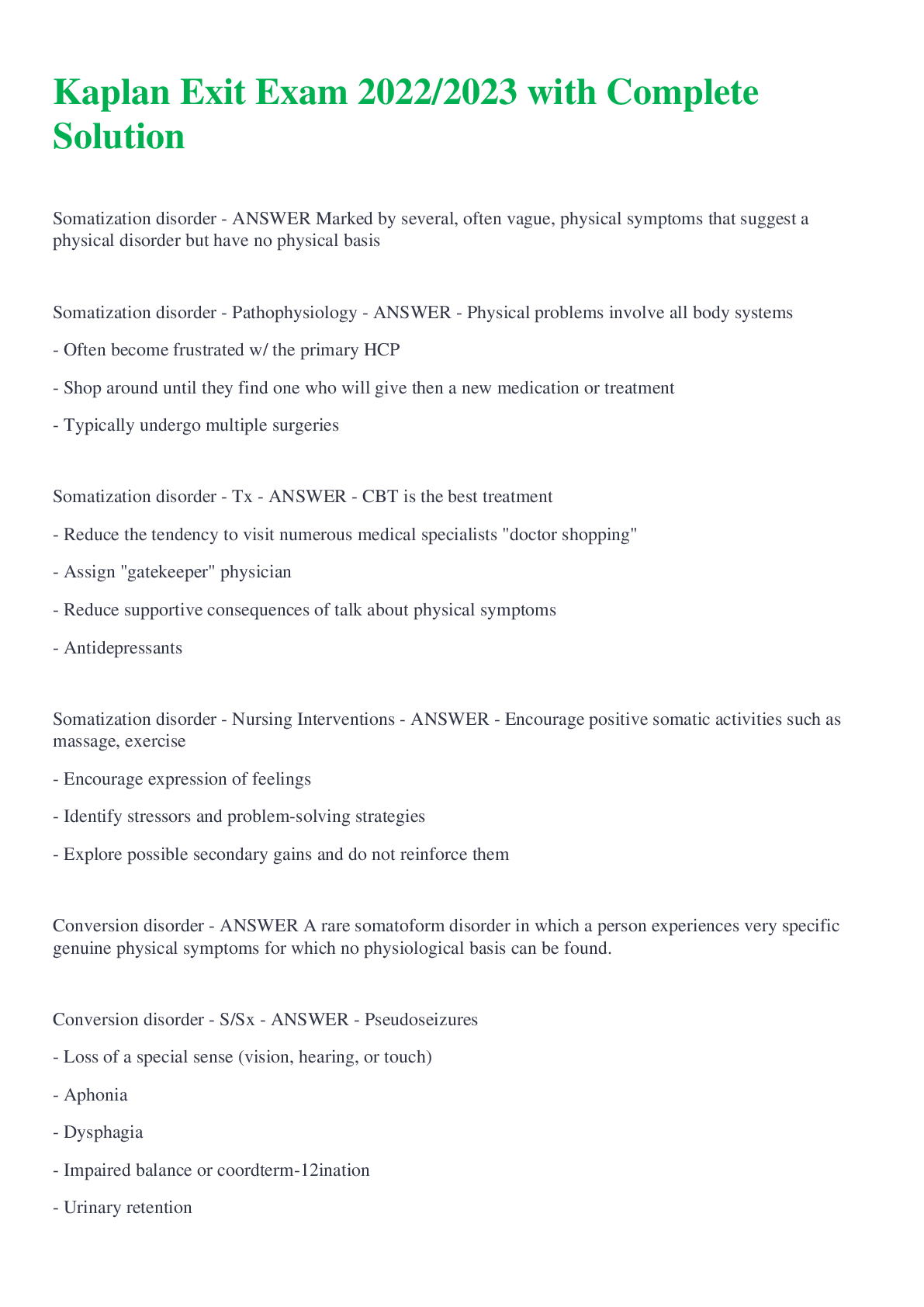
Buy this document to get the full access instantly
Instant Download Access after purchase
Buy NowInstant download
We Accept:

Reviews( 0 )
$9.00
Can't find what you want? Try our AI powered Search
Document information
Connected school, study & course
About the document
Uploaded On
Oct 26, 2022
Number of pages
15
Written in
Additional information
This document has been written for:
Uploaded
Oct 26, 2022
Downloads
0
Views
50


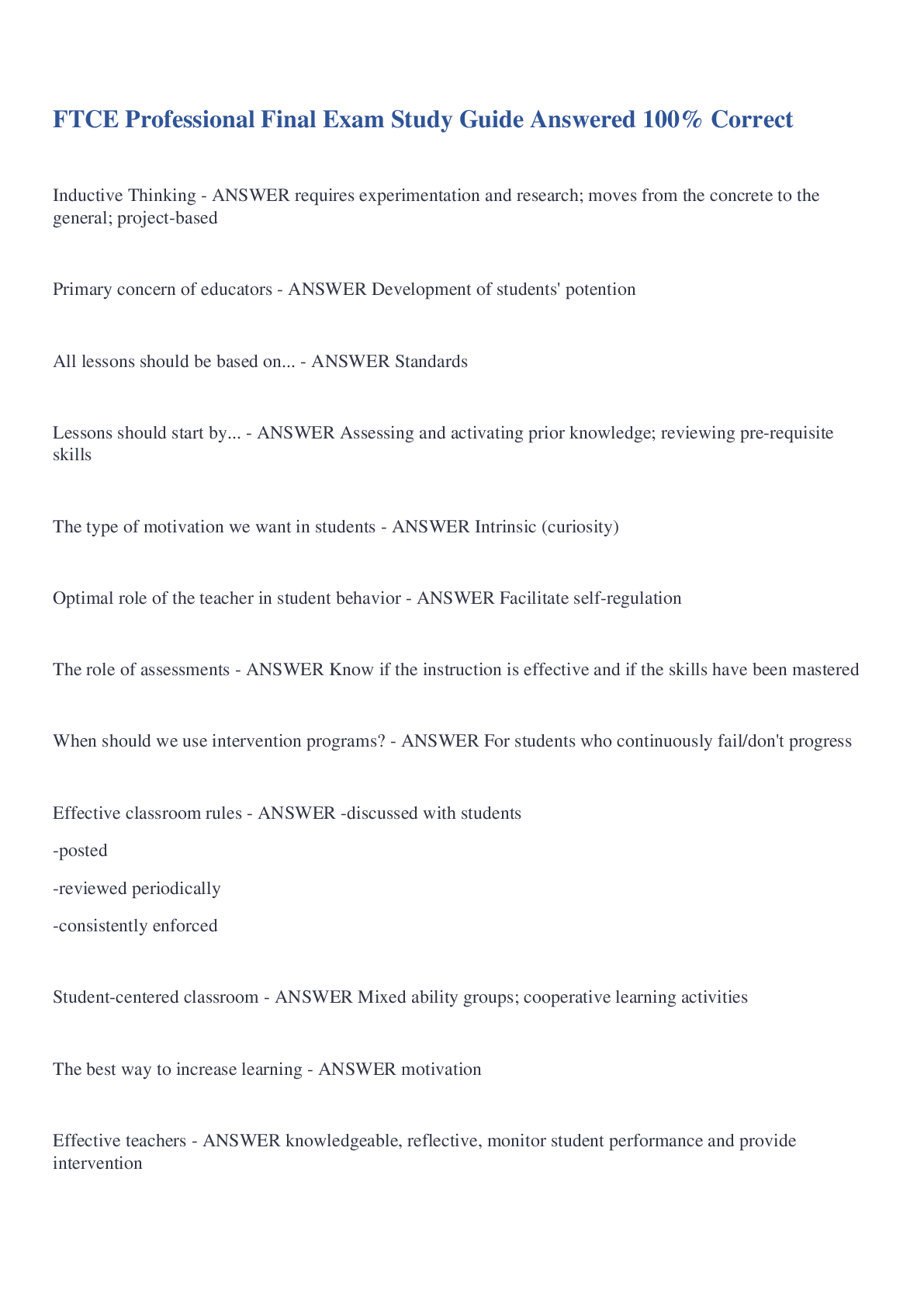
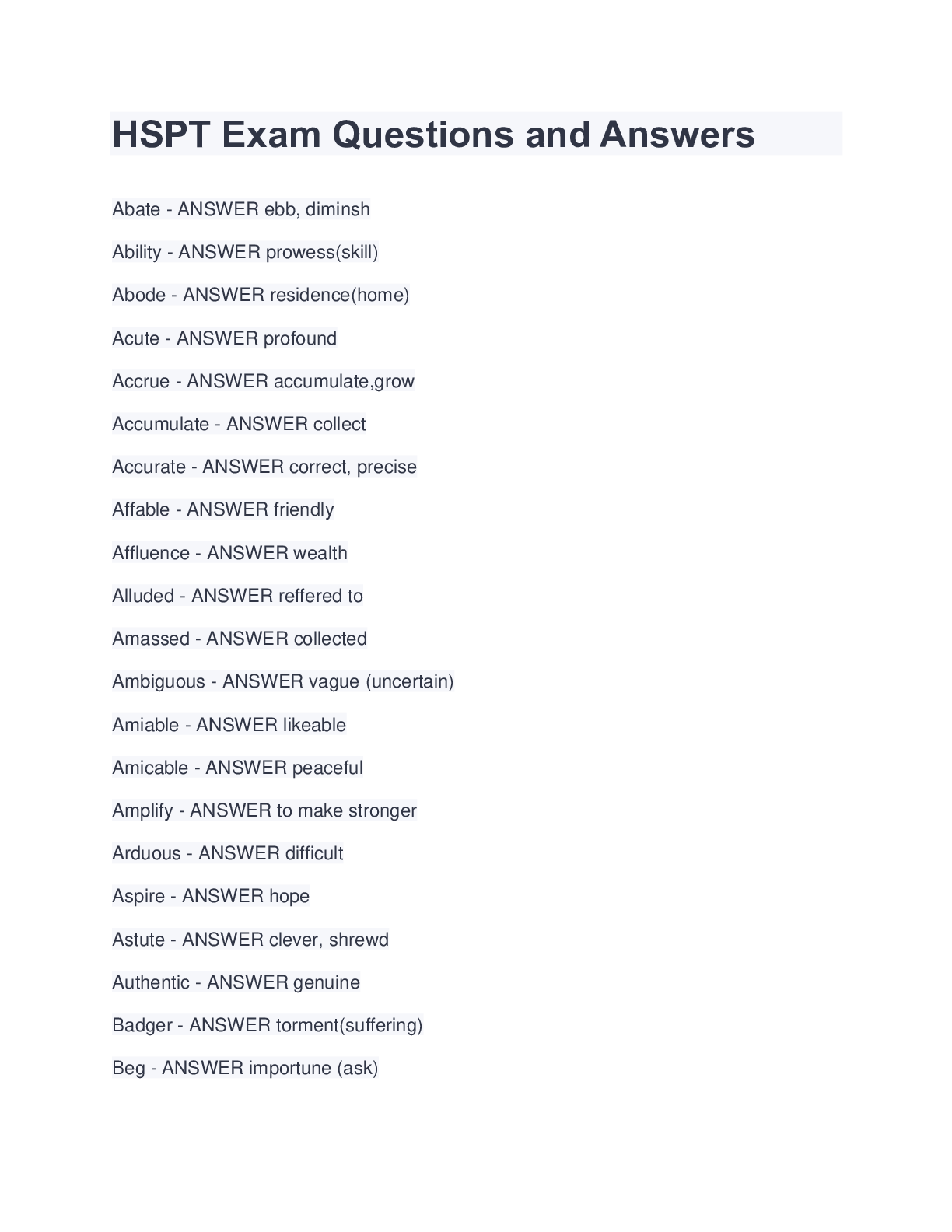
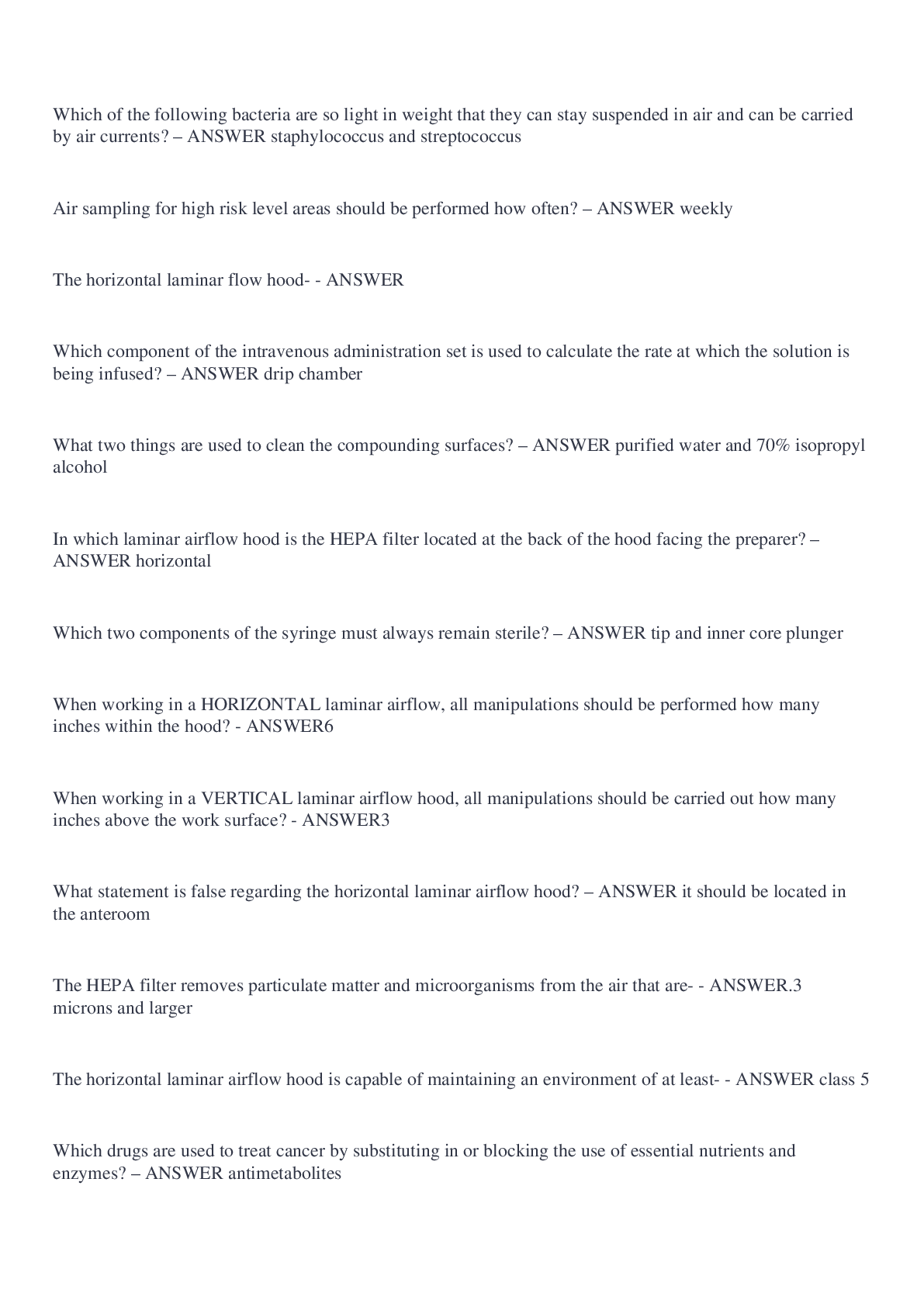
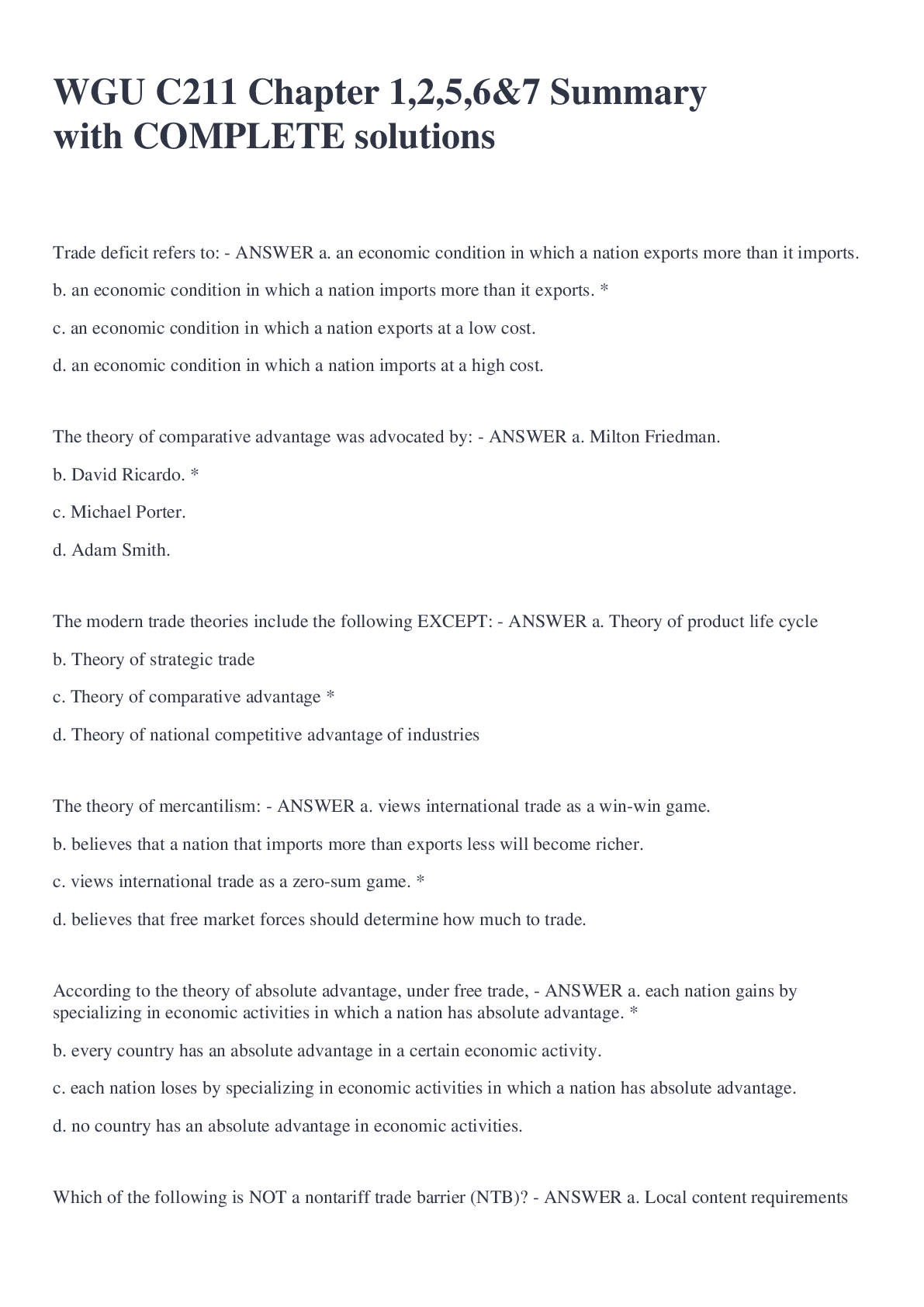
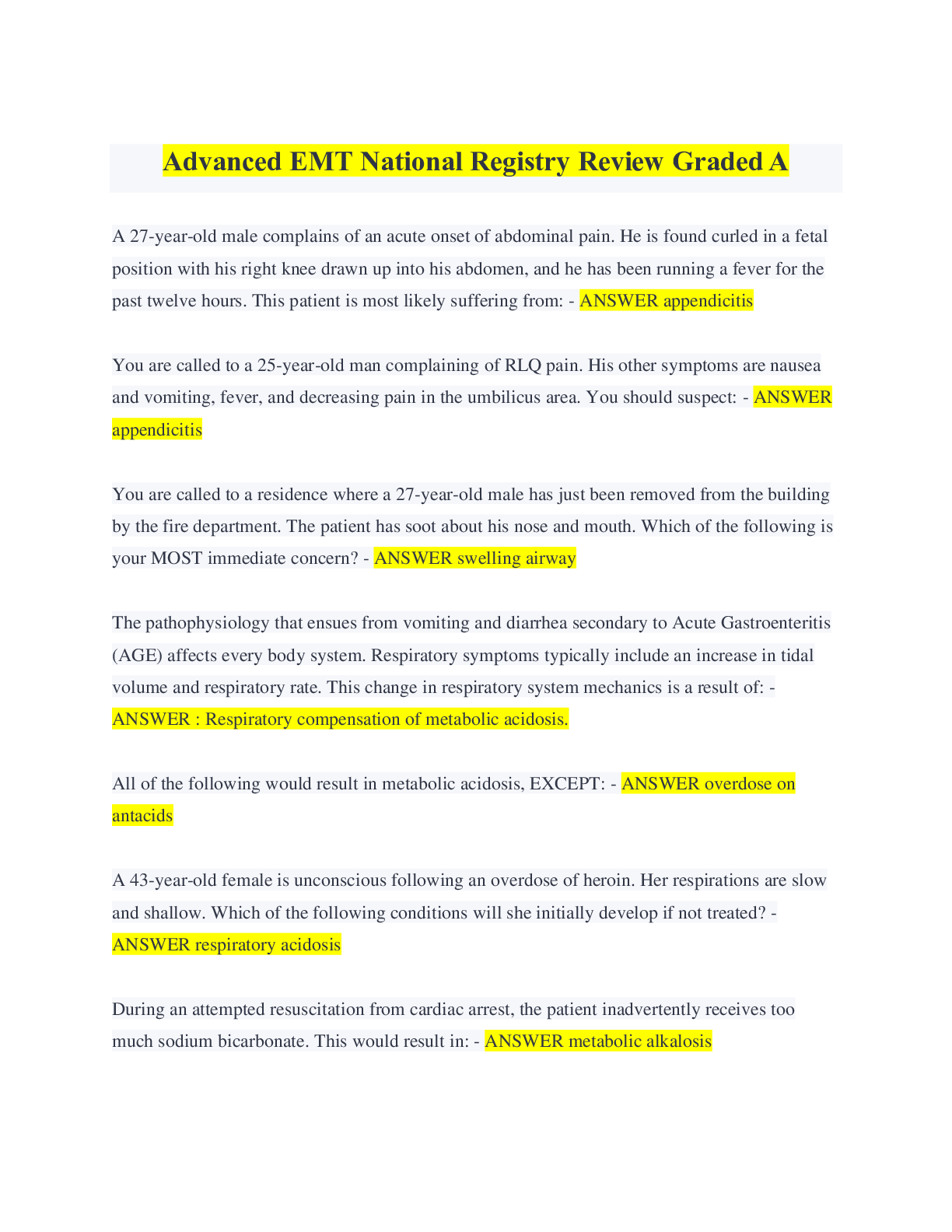
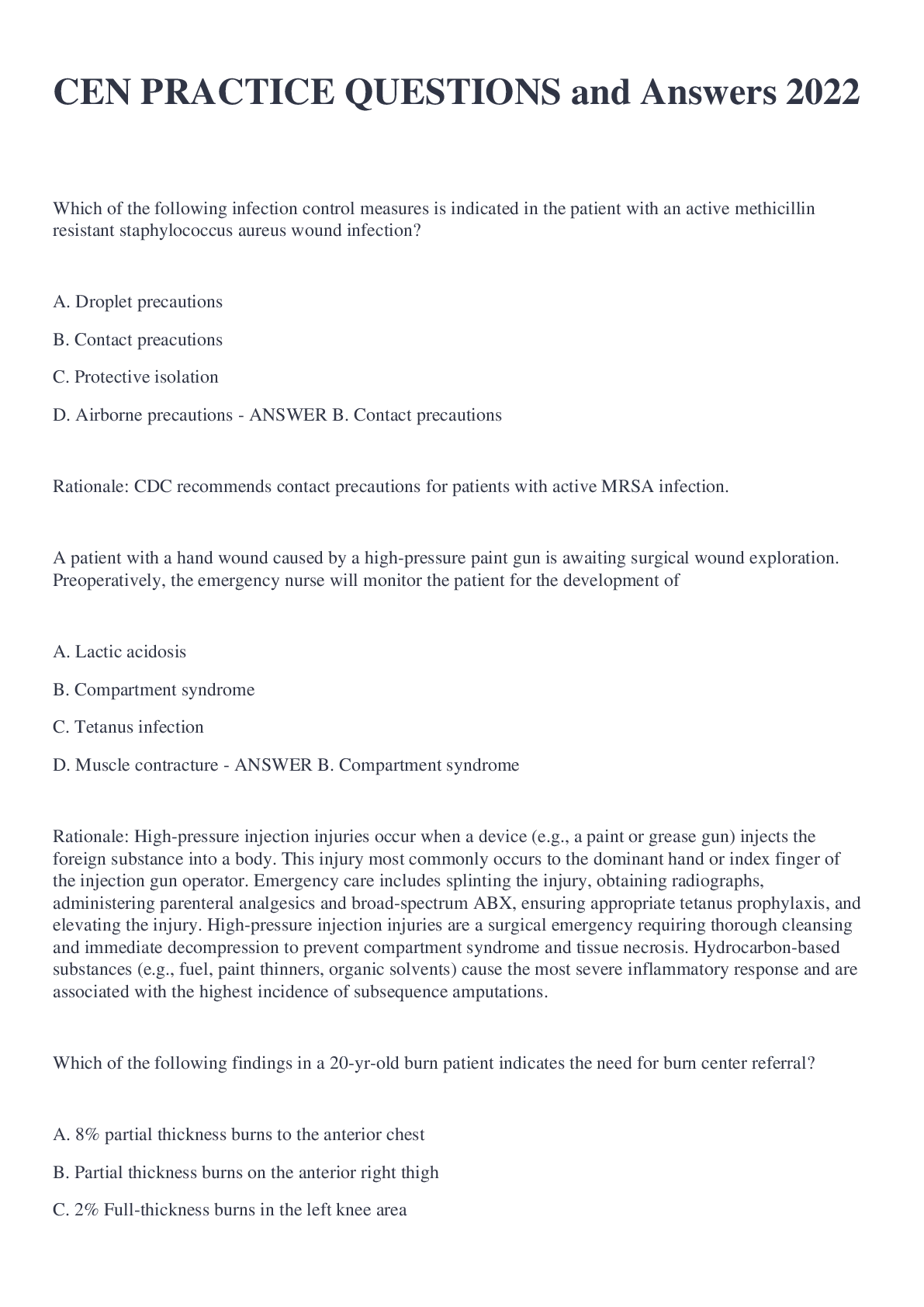
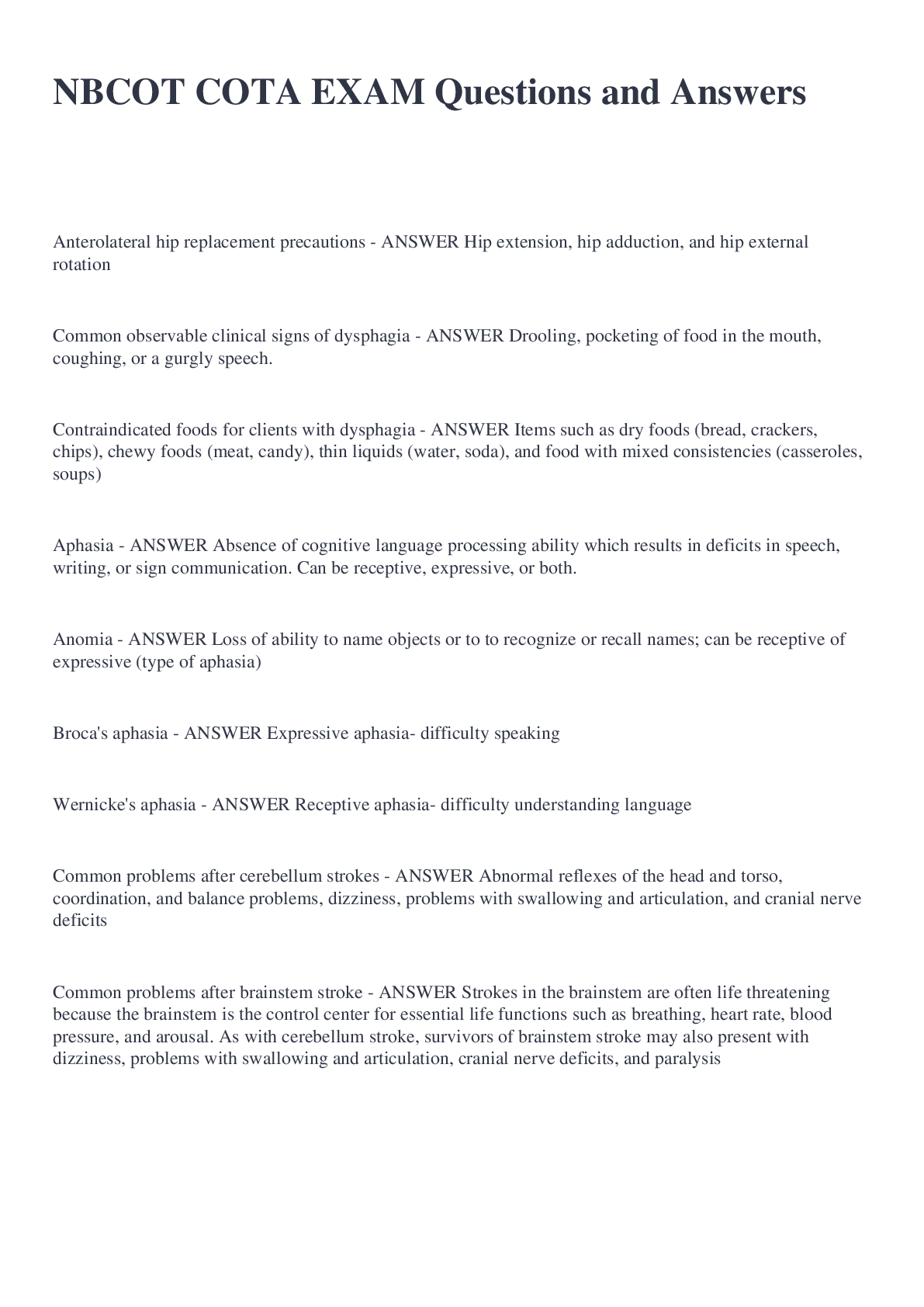
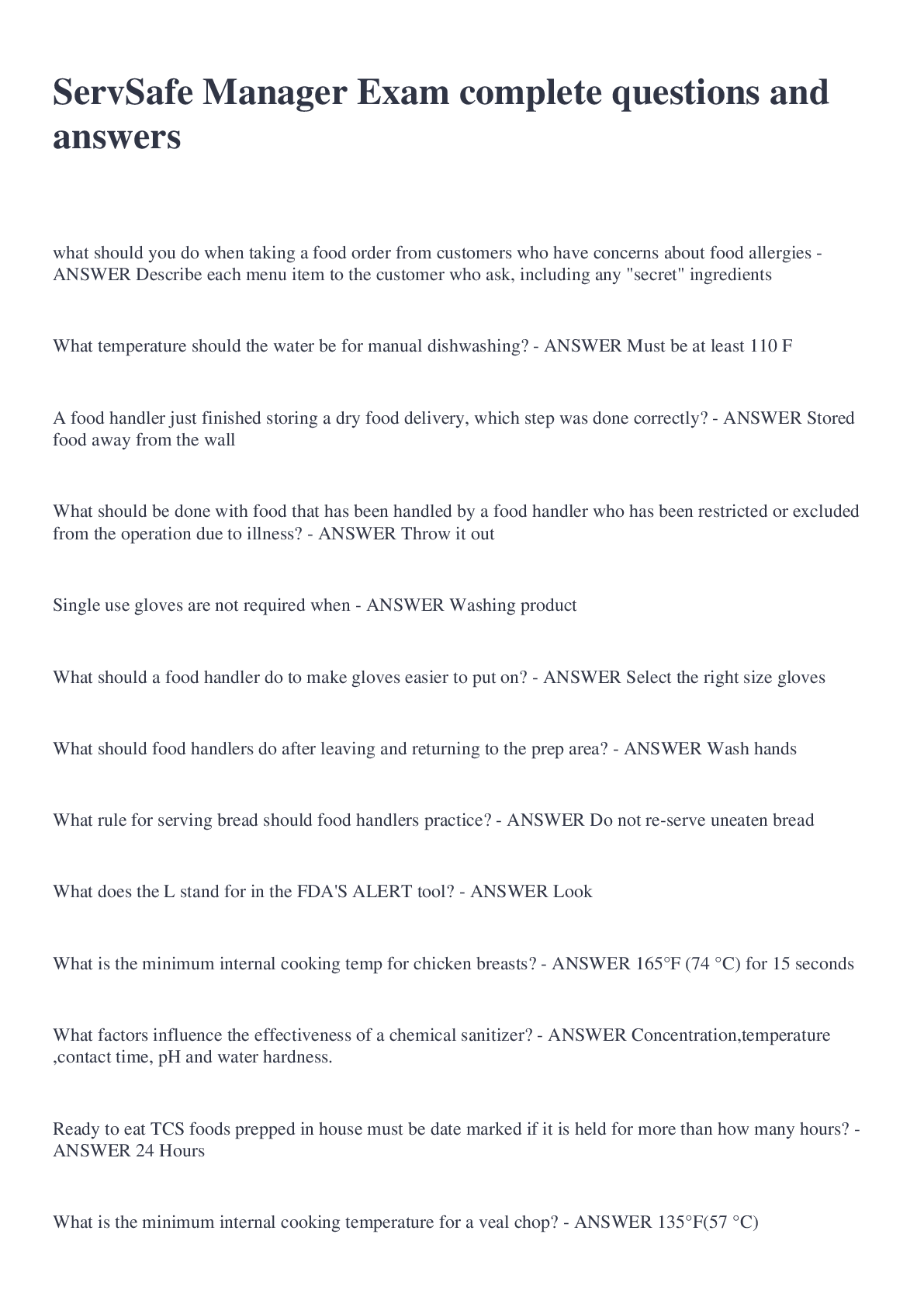
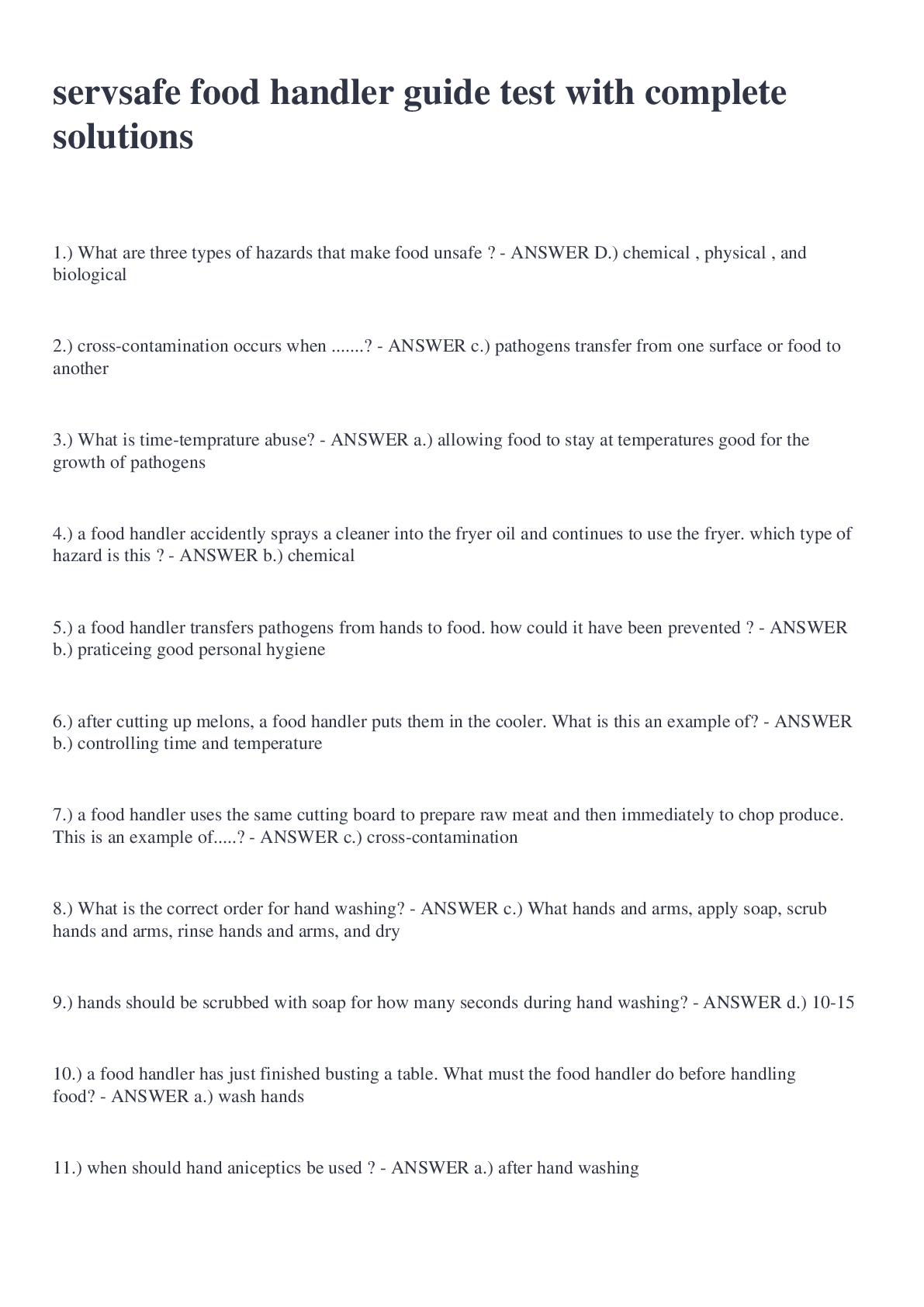
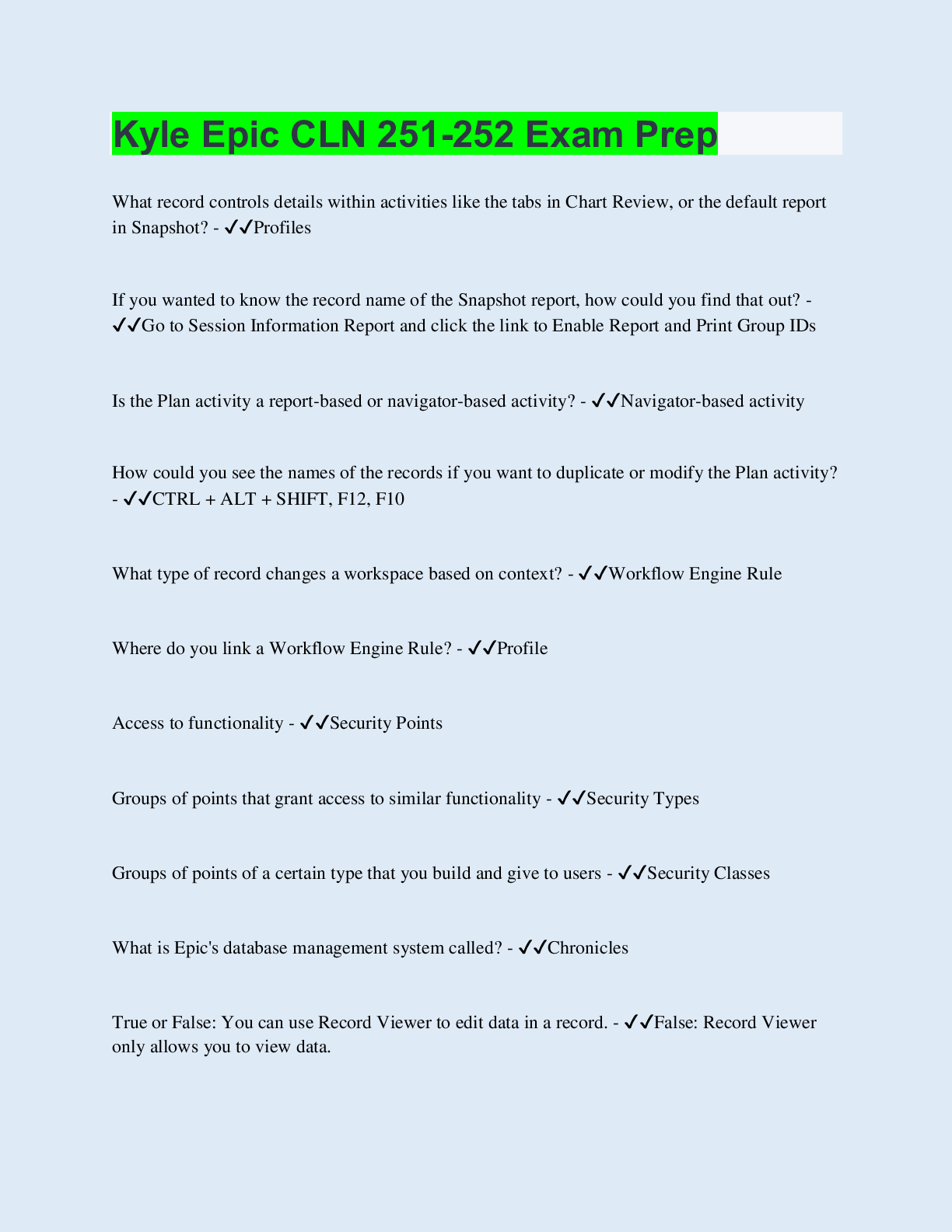
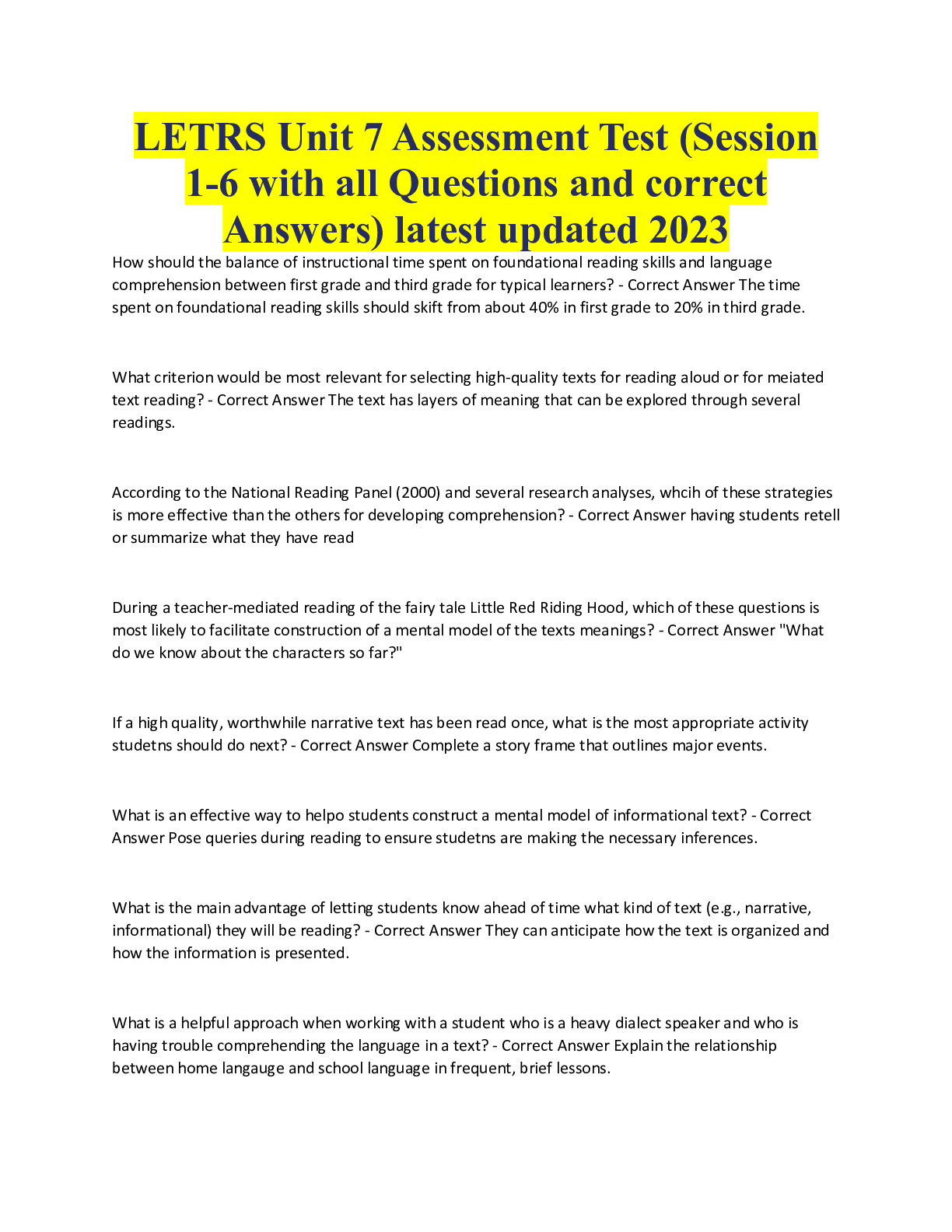
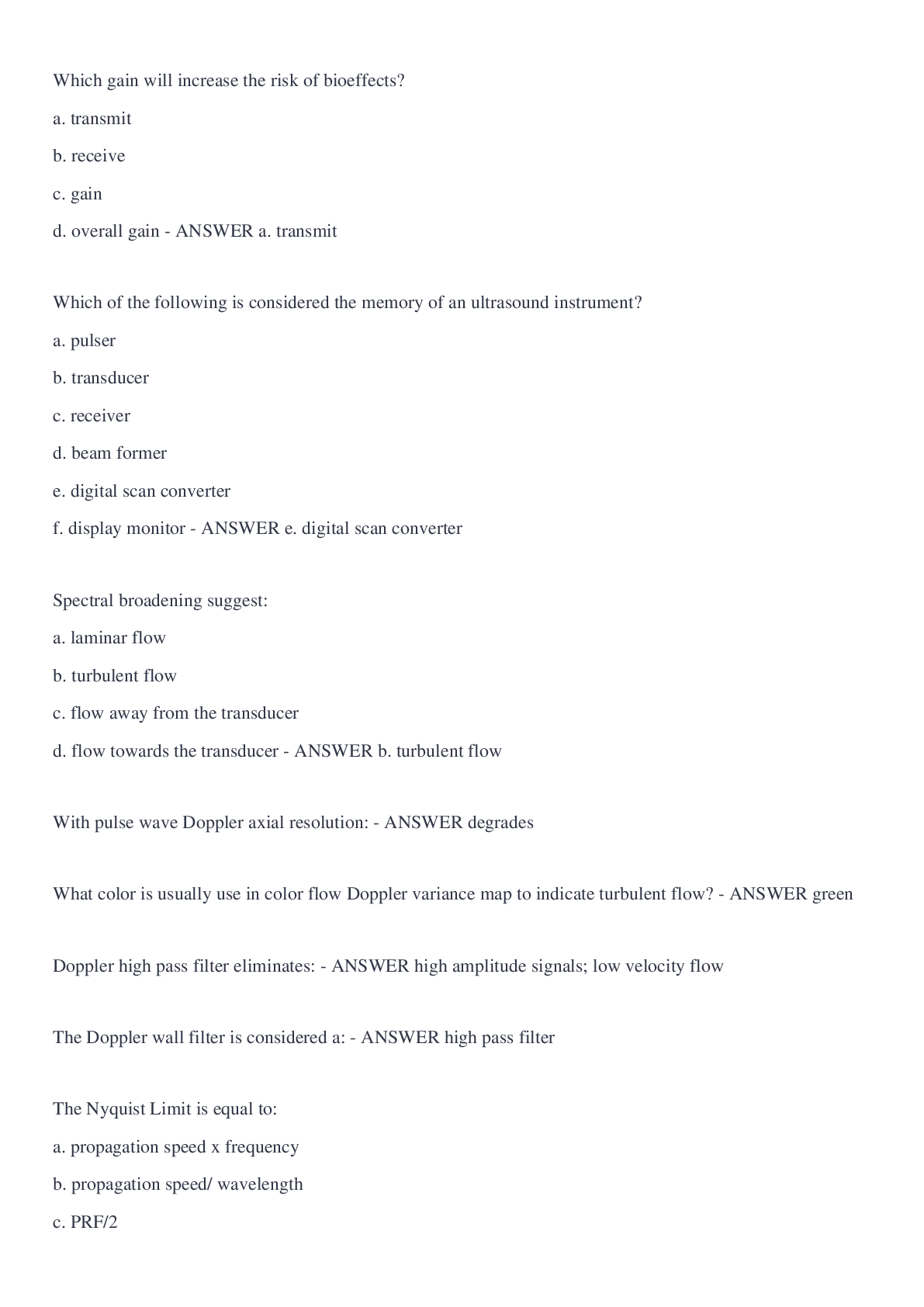
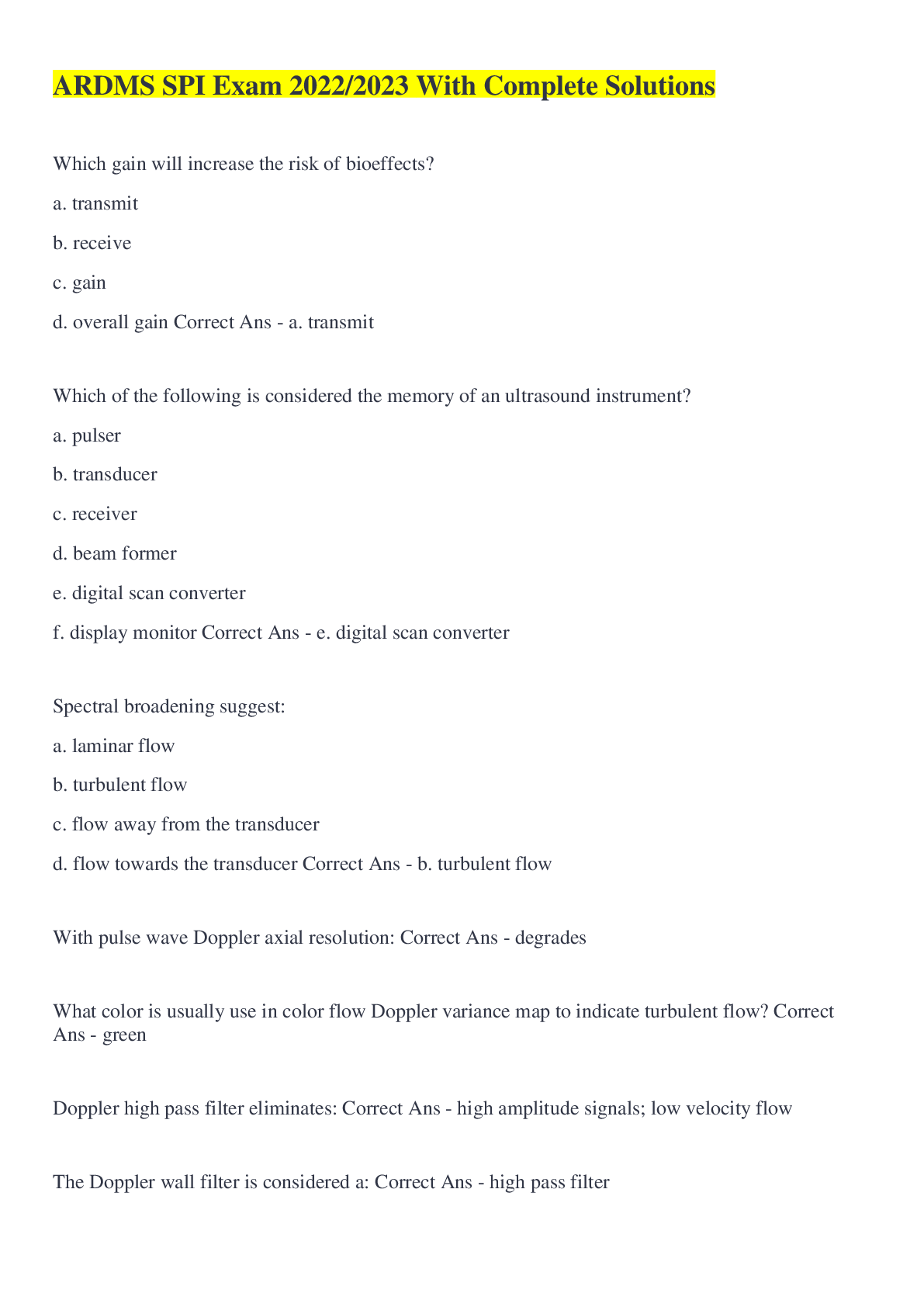
 (1).png)


